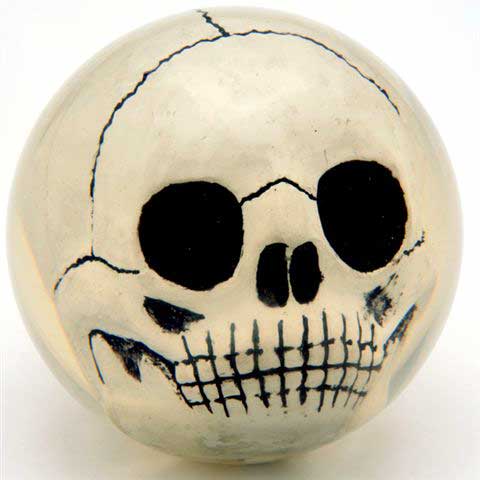


Bowling ball is a round ball which is made from different materials - rubber, urethane, plastic, isinglass, reactive resin (solid, particle, or pearl), or a combination of these materials which is used in the bowling. Ten-pin bowling balls generally have a set of three holes in them, one each for the ring and middle finger, and one for the thumb; however, rules allow for up to five finger holes. A five-pin bowling ball has no finger holes and is smaller so that the bowler can hold the ball in the palm of their hand. Candlepin bowling balls also fit in the hand, but are lighter than five-pin balls.
Bowling balls are in many varieties of colors, and are often either a single flat color, a swirl-like design of multiple colors, or a single color with an iridescent look. It is even possible to obtain transparent bowling balls, painted in such a way as to make it appear as though an object is inside. Some objects have included skulls, footballs, and baseballs.
Inside a bowling ball you find the weight-block and this is a key factor in the amount of action and hook of a bowling ball. In a ball that should go straight you will see an ordinary round weight-block. If your bowling ball need to have more action and hook more, there is a more sophisticated weight-block in the bowling ball which makes sure that the ball has the most impact on the pins.The most important factors in finding the right ball are appropriate fit and proper weight. The fit or the grip of the ball is determined by the size of the finger and thumbholes and the span between them. The most common grip is called the conventional grip and will be used by most athletes. This grip allows the bowler to insert the two middle fingers up to the second joint, and the thumb completely.






Nav komentāru:
Ierakstīt komentāru